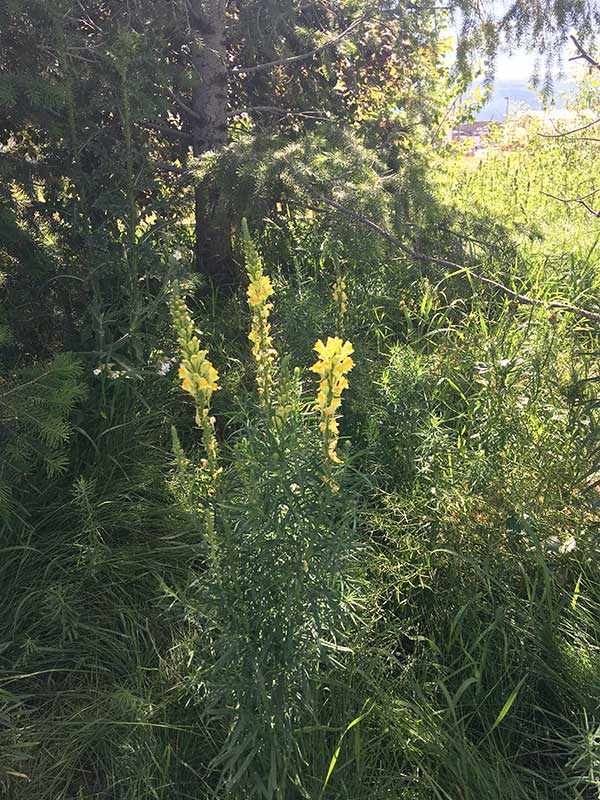Linaria vulgaris / yellow toadflax
- fine, threadlike leaves, plants up to 3 feet tall
- flowers similar to snapdragon, pale yellow with orange lower lip, long spur
- flowers in tight terminal clusters
- plants typically in patches
- “noxious” weed in Idaho
Also known as: butter and eggs, common toadflax, flaxweed, greater Jacob’s ladder, ramsted, wild snapdragon
Synonym: Linaria linaria
Yellow toadflax is a perennial with short spreading roots. It stands as much as 3 feet tall, and has fine, threadlike leaves, more or less resembling those of blue flax (but are more toady?).
The flowers are similar to those of snapdragons, being pale yellow except for an orange lower lip. They are borne on dense terminal clusters (racemes), beginning in July (in the Valley). The flowers also have a long straight spur.
Yellow toadflax spreads both by seed and extensive creeping rhizomes, and therefore typically occurs in patches. The roots can extend at least 10 feet and give rise to new plants every few inches. Each of those plants can have multiple stems, and hence, many flowers. If the roots are cut or after fire, the plants readily re-sprout from abundant root buds. As a result, yellow toadflax can quickly establish dense colonies that monopolize water and nutrients resources.
A lot of the success of toadflax, however, depends on having open habitats to colonize, such as roadsides, waste lands or disturbed areas (that includes plowed or overgrazed land) where it outcompetes other species. Fortunately, in less favorable growing conditions, it can be displaced by those other species. “Less favorable” is, however, a qualitative and unclear term. It does well on roadsides and poor soils. It is also a sneaky species; toadflax populations can stay at low levels until being released by a change in environmental conditions, such as those created by a new disturbance.
Yellow toadflax was imported/introduced originally as a source of yellow dye, and spread initially by folks wanting a pretty plant in their gardens. Of course, it escaped and is now classed as a “noxious weed” in 46 states including Idaho. Because of its easy vegetative reproduction, it is one of the more challenging invasive species to deal with.
The Forest Service has a good on-line article on this problem plant, including details of possible biological controls… Toadflax stem miners and gallers: The original weed whackers.
| Color | |
|---|---|
| Family | |
| Blossom size | |
| Inflorescence size | |
| Inflorescence type | |
| When? | |
| Where? |


